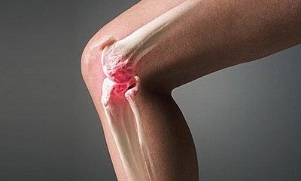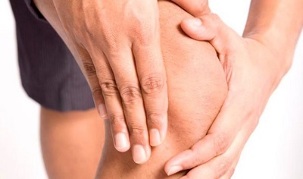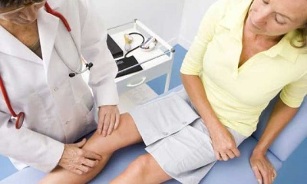The names of the diseases seem to affect the organ system itself, namely the musculoskeletal system. What is the difference between arthritis and osteoarthritis and what are their similarities?
It is known for sure that the disease affects the musculoskeletal system, especially the joints, but the etiology of the diseases is different.
So arthritis occurs due to any infection: local or general, and osteoarthritis are degenerative processes that occur in the articular cartilage, due to the aging of the human body.
However, anyone, no matter how old they are, can get arthritis and osteoarthritis.
Among other things, osteoarthritis can refer to dystrophic processes, while arthritis can be side effects of other endogenous and exogenous diseases.
Among the former we distinguish arthrosis and arthrosis that deform the joints, and arthritis is rheumatoid and rheumatic, specific infectious and post-traumatic, as well as arthritis can accompany concomitant diseases of the blood, respiratory system, digestion and others.
Basics
- Osteoarthritisis a chronic disease of a degenerative-dystrophic nature. The onset of the disease is not associated with an inflammatory component. The pathological process is based on the loss of the ability to regenerate and restore by the cells of the articular cartilage. Over time, painful abnormalities cover nearby anatomical structures: ligaments, bursa, synovium, muscle and bone tissue. Middle-aged and older people are more susceptible to osteoarthritis. According to the results of clinical studies, at the age of 45-65, 30% - 40% of the population undergoes degenerative changes of the joint elements and after 65 years the number of cases increases to 70% - 85%.
- Arthritisaffects the younger segments of the population. Certain types of diseases are found in every thousandth child. The overall prevalence of arthritis is high among people of all ages. Unlike osteoarthritis, the disease is inflammatory. Inflammation develops in the synovial membrane of the joint cavity. As the disease develops, it spreads to the cartilage and ligament apparatus, turning into osteoarthritis.
There's no telling what is worse: arthritis or osteoarthritis. Pathologies are interconnected. The articular elements, undergoing degenerative-dystrophic changes, respond to them with the development of an inflammatory process. The same situation can happen just the opposite. The places of pathological anomalies after suffering from arthritis are a favorable environment for osteoarthritis.
Mechanism of disease formation

The difference between diseases can be seen from the beginning: the mechanisms of their origin.
A fundamental role in the development of osteoarthritis is played by:
- age-related changes;
- climacteric period;
- violation of metabolic processes;
- heavy physical activity;
- highly traumatic surgery;
- overweight;
- frequent joint microtrauma;
- increased uric acid levels;
- lack of blood supply;
- toxic intoxication of the body;
- micronutrient deficiency.
The factors that cause the development of arthrosis are early pathologies: protrusion of the acetabulum, osteochondropathy of the femoral head, endocrine diseases, haemophilia, diseases that have caused greater joint instability, weakness of the ligament apparatus. At a young age, degenerative changes develop against the background of congenital inferiority of the hip joint and traumatic injuries: subluxation and dislocation of the femoral head, fractures of the femoral neck and pelvis.
The starting point in the formation of arthritis are:
- transferred extra-articular infections;
- autoimmune reactions of the body;
- inherited the readiness of the gene that encodes information from the cell surface to deviations;
- spread of the infectious agent through the lymphatic and blood pathways from the primary focus;
- inflammation of the connective tissue;
- diseases of the nervous system;
- hypothermia.
Infection of the synovial fluid has a direct path: open lesions that penetrate the joint. The mechanism of arthritis onset is endowed with a complex and diverse arsenal. The reason lies in the ability of the joints to respond quickly to any inflammation.
Difference in accompanying symptoms

So, with arthritis, pain occurs more often during physical exertion, and pain can also occur at night when a person is in the same position for a long time.
In osteoarthritis, pain occurs locally in one point, that is, where the inflammatory process occurs, but at rest the pain disappears.
The nature of the pain is also different. For example, patients who develop arthritis suffer from sharp, severe pains and spasms, while dull, aching pains accompany osteoarthritis.
Blood counts are also excellent. In the first case, there is an increase in the erythrocyte sedimentation rate (ESR) and an increase in the level of C-reactive protein, as well as a high level of leukocytes and seromukoids. In the second case, there are no such deviations.
The signs accompanying these diseases will help to tell the difference between osteoarthritis and arthritis.
In osteoarthritis, the knee and hip joints are mainly affected by abnormal deviations, sometimes the process is localized in the shoulder area. Pathology develops gradually. The first short-term pains do not allow to determine the exact location of the lesion.
Over time, the clinical picture is supplemented by the following signs:
- a kind of crunchy sound appears when moving;
- we note the meteorological dependence;
- the intensity of the pain syndrome increases against the background of increased loads, at rest the pain passes;
- the range of motion gradually decreases;
- there are thickenings along the edge of the joint space;
- increasing in volume, the processes compress the nerve endings, causing severe incessant pain;
- the joint is exposed to instability.
Any joint of the musculoskeletal system can be affected by pathological abnormalities in arthritis. The most vulnerable are small elements of the movable joints of the legs, hands, lower leg and elbow. Rheumatoid arthritis is characterized by the symmetry of focal lesions.
The first symptomatology, as in osteoarthritis, appears unexpectedly. The clinic of pathology begins with a general malaise. Pathological abnormalities grow rapidly, affecting the mobility and functional capabilities of the affected joint. But if osteoarthritis is characterized by exacerbation of pain when moving, then in the case of arthritis, the more you move, the less pain. The intensity of painful sensations increases at night. In the morning, the patient finds it difficult to overcome the stiffness of the joints. On palpation, pain is determined over the entire surface of the joint.
The condition is getting worse:
- local hyperemia;
- the formation of subcutaneous nodules;
- enlarged lymph nodes;
- damage to peripheral nerves.
Pathology in the active phase is accompanied by a pronounced general symptomatic complex: increased temperature indicators, chills, fever, intoxication syndrome. In case of complications, other elements of the biological system are involved in the pathological state: the organs of vision, respiration, digestion, cardiovascular, urinary and nervous systems.
Osteoarthritis, in addition to the complete destruction of cartilage, causes disturbances in the biomechanics of the musculoskeletal system.
Differential Search Methods
A detailed study of the current clinical picture allows us to understand how to distinguish arthritis from osteoarthritis with maximum accuracy.
Differential characteristics are identified based on the results of the following studies:
- Complete blood count.In osteoarthritis, in most cases, the sedimentation rate and the reaction of the erythrocytes in the blood remain normal. Arthritis is characterized by a significant increase in indicators, which confirms the presence of an inflammatory process in the body. The analysis does not provide a clear definition of the disease, but allows to distinguish between degenerative-dystrophic changes from inflammation.
- Biochemical analysis of blood sampling. In arthritis, the study confirms the presence of inflammatory markers in the biomaterial: C reactive protein, seromucoid. It is possible to detect rheumatoid factor - immunoglobulin antibodies that are mistakenly produced by the body. Biochemical parameters for osteoarthritis remain normal.
- X-ray examination.At the initial stage of the development of arthritis, no pronounced changes are detected. With osteoarthritis, uneven narrowing of the joint space, the formation of osteophytes (growths on the surface of the bone tissue) is recorded.
- MRI.The most reliable differential diagnosis of arthritis and osteoarthritis in the early stages. The technique allows to detect changes in the structural structure of the cartilage, compaction of the synovial membrane, joint effusion into the cavity, newly formed cysts, self-growth of bone tissue.

Characteristics of therapy
Doctors of various qualifications are involved in the treatment of pathologies. With osteoarthritis, the patient is referred to an orthopedic-traumatologist. In case of arthritis, the exact cause of the pathological changes is initially established. Depending on the revealed circumstances, a specialist is selected.
Consequently, that both diseases affect the state of the supporting apparatus, their methods of treatment are identical to each other. An important condition for recovery is a decrease in total body weight and, therefore, a decrease in the load on the organs affected by the disease. In both cases, if medications and physiotherapy courses do not give positive results, joint replacement is used.
Specific therapy, corrective gymnastics, drug treatment and physiotherapy are also used. With the most severe complications, arthroplasty is used.
In addition to identical methods, there is some difference in the treatment of pathologies.
For arthritis, treatment begins with immediate and vigorous therapy. Anti-inflammatory and antibacterial drugs are prescribed. Preference is given to drugs with the least pronounced side effects. If the result does not meet expectations, the drugs are subsequently replaced.

A comprehensive course on drugs includes:
- intra-articular injections of antihistamine;
- corticosteroids;
- cytostatics;
- sulfonamides;
- products based on gold salts.
Prognosis is generally good with adequate and timely treatment of arthritis.
Osteoarthritis requires comprehensive and long-term treatment. The main task of therapeutic measures in the treatment of arthrosis is the restoration of the cartilage tissue of the joint. Pharmaceutical products with this ability include chondroprotectors. The most effective are chondroitin and glucosamine.
Impaired blood microcirculation is eliminated with the help of vasodilators. To get rid of spastic pains, relax muscle tone, muscle relaxants are prescribed. Local application of warming ointments and creams is shown, which is strictly prohibited in case of arthritis.
In parallel, funds are used that stimulate metabolic processes, the body is fed with vitamins and microelements. Not the last place in the therapy of arthrosis is occupied by specially developed therapeutic exercises.
Osteoarthritis belongs to the group of chronic diseases that cause irreversible consequences that cannot be completely eliminated. Therapeutic measures are designed to slow down degenerative processes as much as possible.
In both cases, people who observe obvious signs of these diseases should immediately consult a specialist and it is not worthwhile to cure these diseases on their own. Take care of your health and get what you want.




































